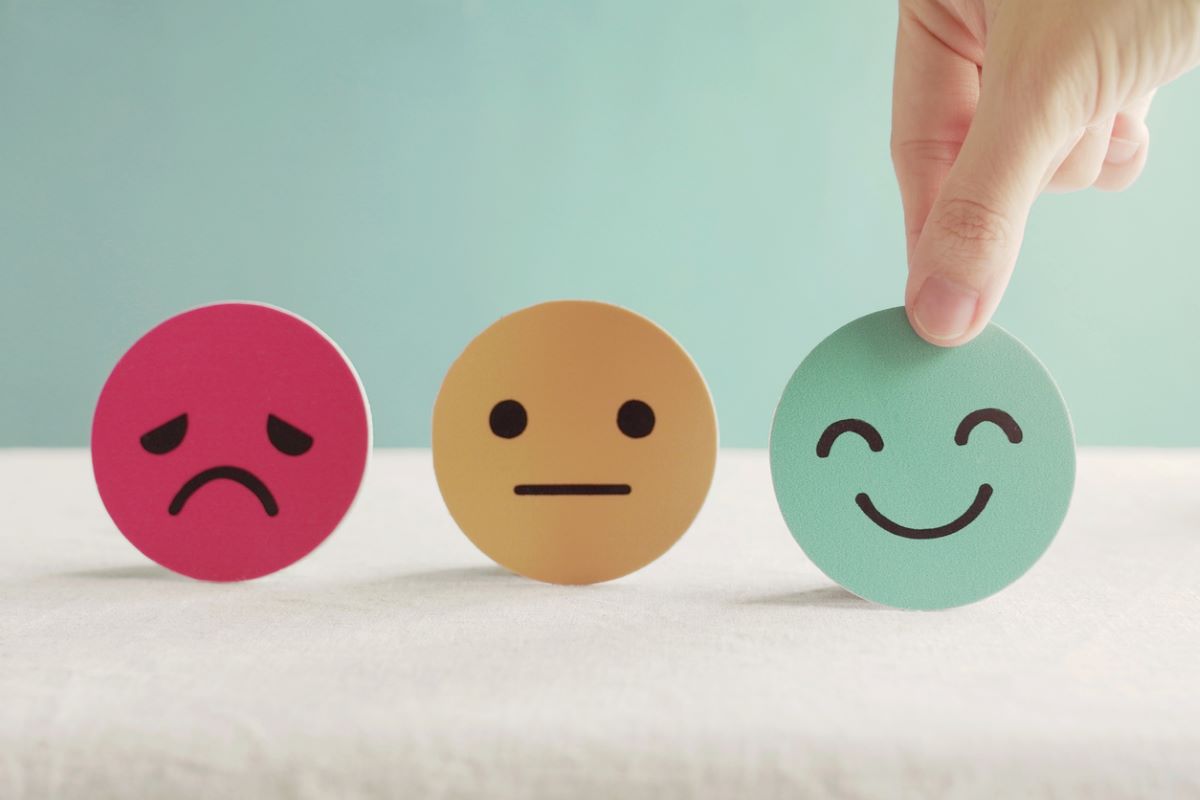Curating the week in wellness Nov. 8–12, 2021: The rise of ‘mood mapping,’ in-demand workplace skills, and more
The week’s essential content for those dedicated to employee well-being.

Hello, wellness pros!
We hope you find this fresh collection of thought-provoking articles, tips and takeaways edifying and empowering.
Please get in touch with any ideas, suggestions or feedback on how we can serve you better or cover topics that are top-of-mind at your organization. Email: kaceyl@ragan.com.
1. Can ‘mood mapping’ help fight burnout?
Fast Company published an interesting piece this week about one company’s use of “mood mapping” to get a better sense of how workers are feeling and faring. The idea is to get employees to share updates on how their mood is throughout the day, with the goal of alleviating burdens from those who are struggling.
Fast Company explains:
“‘When people are remote, it can be hard to know how they’re showing up to work,’ says Dan Pupius, CEO of Range. ‘You jump on these meetings, and there’s not much informal communication going on. When you’re in the office, however, you can find cues. For example, you see someone in the kitchen and maybe they look tired or stressed. That helps you to interpret their behavior throughout the day.’”
Hmm. Seems a bit invasive, you say? Fast Company explains that this approach requires high levels of trust and transparency. And it must start from the top:
“For mood mapping to work, employees need a level of psychological safety. ‘It’s a prerequisite, but it’s like a chicken-and-the-egg thing,’ he says. ‘Is it the environment that allows you to be vulnerable, or is it the vulnerability that creates a psychologically safe environment?’
‘To get employees to be open,” Pupius says, “the leader needs to model vulnerability by being authentic and honest, checking in yellow one day or use a green emoji that looks slightly stressed.’”
Whether or not “mood mapping” becomes a hot wellness trend, this piece is a good reminder that companies are increasingly going outside the box to find ways of engaging employees—or at least they should be. As “The Great Resignation” continues to flatten productivity, it’s high time to try new things, take a few risks and maybe upend the status quo.
2. Sharpening your approach toward well-being in a hybrid environment.
Benefits Pro offers a slew of guidance from a senior scientist with Virgin Pulse, who shares that, “an organization’s culture is about showing employees that your company cares about them—at work and beyond.”
To do a better job of demonstrating meaningful, genuine care for employees in a remote or hybrid setting, the piece offers these tips:
- Make it easy for employees to engage in their own wellbeing.
- Trust in an employer leads to employee engagement.
- Create alignment from the top down.
- Strike a balance between tech and the physical world.
- Measure value of investment (such as work engagement and how people feel about their employer) in tandem with ROI.
The piece concludes with a call to action:
“All employees, regardless of whether working remote or onsite, expect empathy and their employer’s support today to regain, maintain or sustain a healthy lifestyle. Support for health and well-being is valued by employees, and integral to your being perceived as an employer of choice.”
3. Five easy ways to bolster workplace resilience and mental health.
Sustainable Brands has a piece written by Laura Barbieri, who manages LG’s CSR and community relations efforts. Barbieri shares about LG’s own “Sustainable Happiness” program, and also offers these tips to boost morale, happiness and resilience:
- Carve out time for breaks to recharge mental health.
- Build ‘one-minute meditations’ into your workday.
- Practice active listening.
- Foster natural touchpoints for human connection.
- Encourage employees to take time out of their days to help others.
4. A roundup of reports on sustainability updates, DE&I progress and ESG initiatives.
For a bit of inspiration on demonstrating your company’s sustainability activities or philanthropic ventures, have a look at these recent reports:
5. How to engage each generation right now.
A new survey from Goodhire sheds light on generational differences in attitudes, preferences and challenges right now. Among the key findings:
- 57% of Millennials said they are very happy at work, making them the happiest generation.
- 22% of Gen Z said they are either unhappy or hate work, making them the unhappiest generation.
- Millennials are most fulfilled at work, with 60% of them saying they find great meaning and purpose in their jobs. Gen Z is the least fulfilled with just 41% finding great meaning and purpose.
- 69% of Gen Z is not satisfied with their work-life balance—the lowest satisfaction rate of all generations—followed by Baby Boomers (63%), Gen X (55%) and Millennials (48%) who are the most satisfied with work-life balance.
- To achieve better work-life balance Boomers would first sacrifice career advancement opportunities, while Gen X and Millennials would forfeit a portion of their salaries. Gen Z would be most willing to give up paid time off.
- A whopping 83% of all American workers would prefer a four-day workweek. Millennials are most in favor (90%), while Gen Z is least interested (76%).
- Only 30% of Baby Boomers are completely happy with their compensation, followed by Gen Z (32%), Gen X (42%)and Millennials (47%).
- 68% of Millennials are happier working remotely, while Baby Boomers are the least happy with remote work (37%).
- Of those American workers who are able to work remotely, a minuscule group (9%) say they are less engaged and satisfied when working remotely.
- Millennials lead the charge in jumping to a new job in the next 12 months, with 46% of them planning to do so. Baby Boomers are the least likely to be on the job hunt next year (19%).
6. Which workplace skills are in-demand right now?
According to Udemy’s October 2021 Workplace Learning Skills Index, which tracks the most popular courses consumed by global professionals, “soft skills” might not be so soft anymore.
“Skills related to leadership, teamwork, communication, productivity and wellness are critical to every employee’s performance. This is why it no longer makes sense to call them ‘soft skills,’ as if they represent a less important set of skills in the workplace. We’re saying goodbye to soft skills, and hello to ‘power skills.’”
Udemy’s data shows huge jumps for courses that tie to “power skills” such as communication, wellness, productivity and leadership:
- 39% increase in Employee Performance Management course consumption globally.
- In the Retail industry, and in the Professional Services industry, Conversations Skills surged by 118%.
- 33% increase for Creative Writing and 37% increase for Team Building.
- 40% for Coaching.
7. Updates on the vaccine mandate.
HR Dive breaks down the latest guidance employers should be up on, including the recent appeals court delay.
HR Dive asks the fair question of how OSHA, which has about 1,850 inspectors, plans to enforce sweeping mandate laws. Let’s just say it’s probably not worth rolling the dice. The piece says, “Employers found to be violating the ETS could face financial penalties. Serious and other types of violations carry a maximum penalty of $13,653 per violation, while willful or repeated violations carry a $136,532 maximum per violation.”
It continues:
“ ‘Any part of the regulation could be cited in handing out a violation,’ Travis Vance, partner at Fisher Phillips, said, ‘and OSHA may assess such violations on a per-employee basis.’ To borrow Vance’s example, if the agency finds that an employer has failed to comply with the ETS requirement that it keep COVID-19 vaccination records for a number of employees, a penalty may be imposed for each individual employee record the employer failed to keep.”
The stakes are quite high, and OSHA will not be messing around, so take time to ensure your company is complying with all rules and regulations.
8. What employers must prioritize moving forward.
Forbes offers guidance on what merits investment and energy right now — and how your company can navigate another year of massive uncertainty. The tips include:
- Ensure your systems foster a level playing field.
- Be a leader, not a boss.
- Show up by being present, engaged and interested in people’s lives and wellbeing.
- Build a community that prioritizes the individual.
- Set the tone on employee wellbeing.
- Bring humanity into focus.
9. Red flags of a toxic workplace.
Human Resources Director shares a handful of common culture killers, such as weak communication, poor leadership and limited career growth. To counter those drains on morale and productivity, the piece suggests:
- Create a network of trusted co-workers.
- Reiterate important goals.
- Train leaders and managers to be better.
- Encourage work-life balance.
- Treat everyone in your organization like human beings.






